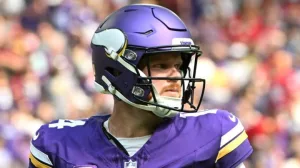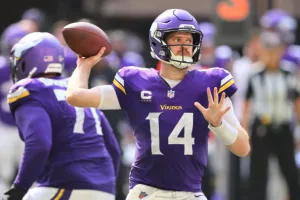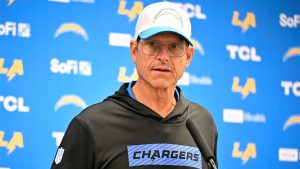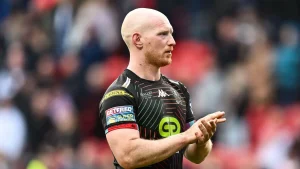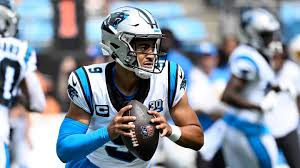
JUST IN: The NFL analyst has finally called for Minnesota Vikings to trade QB Bryce Young for a very interesting reason….

In a surprising twist of NFL analysis, an esteemed analyst has recently advocated for the Minnesota Vikings to trade their quarterback, Bryce Young. While Young, the 2023 No. 1 overall pick, is still adjusting to the professional game, this recommendation is rooted in a unique set of circumstances that align with broader team strategies and dynamics.
To fully appreciate the rationale, it’s essential to consider both Young’s potential and the Vikings’ current situation. Bryce Young, coming out of Alabama, was highly touted for his poise, accuracy, and playmaking abilities. His transition to the NFL has been closely scrutinized, with many expecting him to develop into a franchise quarterback. However, despite flashes of brilliance, Young has faced the typical rookie challenges, including adapting to the speed of the game and dealing with inconsistent offensive line play.
The analyst’s argument is built on the premise that the Vikings’ current roster and future aspirations might be better served by moving Young rather than developing him in a system that may not be optimal for his skill set. Here’s a closer look at why this unconventional recommendation could hold merit:
1. **Team Dynamics and Roster Fit:** The Vikings are in a unique transitional phase. With an aging quarterback in Kirk Cousins and a roster that features a blend of established stars and emerging talents, the team is at a crossroads. Trading Young could potentially bring in a package of assets that better aligns with the team’s immediate needs. For instance, acquiring a combination of high draft picks and established players could help the Vikings address pressing issues, such as improving their defensive line or adding depth to the receiving corps.
2. **Strategic Rebuilding:** The NFL is a league where timing and strategy are crucial. The analyst argues that the Vikings might be in a more favorable position to pursue a strategic rebuild rather than focusing on the immediate development of a rookie quarterback. Given Cousins’ contract status and the potential for a high pick in the upcoming draft, the Vikings could pivot towards a longer-term strategy that prioritizes foundational improvements over a quick fix.
3. **Market Value and Demand:** Bryce Young’s market value remains high, despite his rookie struggles. As a top draft pick, his potential is undeniable, and several teams might view him as a cornerstone for their future. The analyst suggests that the Vikings could capitalize on this high value to secure a trade package that significantly enhances their overall roster. This approach not only addresses current weaknesses but also sets up the team for future success.
4. **Developmental Concerns:** Developing a quarterback requires a conducive environment, including a solid offensive line, skilled playmakers, and a system that plays to their strengths. The Vikings’ current setup may not be the ideal environment for Young’s growth, potentially stalling his development and leading to long-term inefficiencies. The analyst believes that sending Young to a team with a more tailored system could maximize his potential and, by extension, lead to a more favorable outcome for both Young and the Vikings.
5. **Long-Term Vision:** Lastly, the analyst’s perspective is driven by a long-term vision for the Vikings. By trading Young, the team could realign its focus towards a strategic rebuild or retooling phase, ensuring that every move made is in service of a coherent, long-term plan. This perspective values the potential of creating a stronger, more balanced team over the short-term challenges of developing a rookie quarterback.
In essence, the analyst’s recommendation for the Vikings to trade Bryce Young is a bold strategy rooted in a nuanced understanding of team dynamics and future planning. While it may seem counterintuitive to part ways with a high-potential quarterback so soon, the approach underscores a broader vision of optimizing team assets and aligning strategic goals for long-term success.
